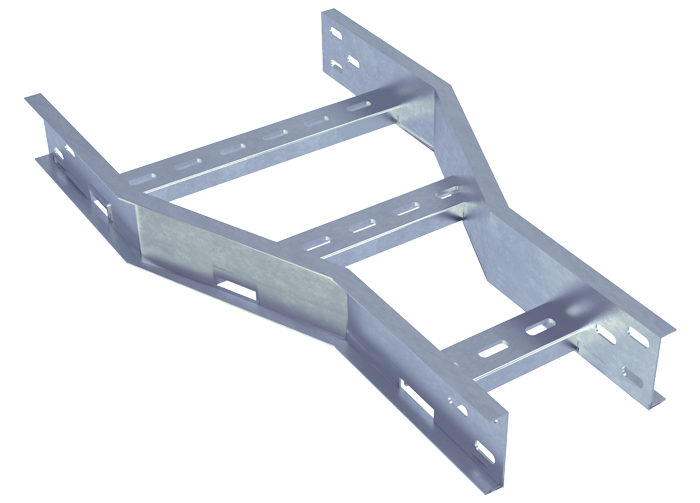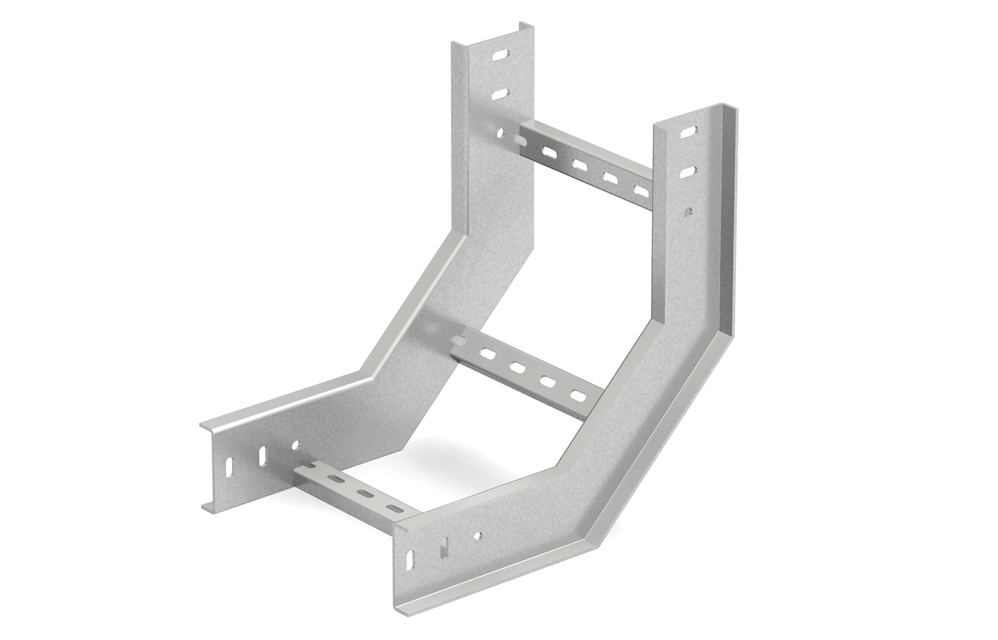Ladder cable trays are a foundational component of modern electrical infrastructure systems that provide an efficient, organized, and safe means of routing and managing cables in various industrial, commercial, and residential settings. This extensive article will delve into the intricate details of ladder cable tray design, their multifaceted benefits, applications across different sectors, installation best practices, and considerations for ensuring optimal performance.
Defining Ladder Cable Trays
A ladder cable tray system is a modular and open framework that mimics the structure of a ladder, consisting of two parallel side rails interconnected by evenly spaced crossbars or rungs. These trays can be fabricated from diverse materials such as steel (galvanized or stainless), aluminum, or fiber-reinforced plastic (FRP), each offering unique properties suitable for different environments and load requirements.
Detailed Design Elements
Side Rails: Serving as the backbone of the tray, the side rails come in solid or perforated forms, depending on the need for mechanical protection and ventilation. Solid rails provide robustness against physical damage while perforated ones enhance airflow for improved heat dissipation.
Rungs: The horizontal members or rungs create the ladder-like pattern, providing ample room for multiple cables to lay flat with adequate separation, preventing overheating and interference. Rung spacing can be customized based on the size and number of cables being managed.
Cable Spacing and Routing Features: The distance between rungs allows for easy insertion and removal of cables while maintaining NEC and IEC standards for clearance and bend radiuses. Additional accessories like dividers, covers, and support brackets further aid in organizing and securing cables within the tray.
Finish and Corrosion Protection: Ladder cable trays often come with corrosion-resistant finishes like powder coating, hot-dip galvanization, or specialized coatings for harsh chemical environments. This ensures longevity and reduces maintenance costs.

Key Advantages of Ladder Cable Trays
1. Versatility and Scalability: The open configuration of ladder cable trays permits quick and easy modification, addition, or replacement of cables without requiring significant rewiring or downtime, making it ideal for facilities that anticipate changes or expansions.
2. Optimized Airflow and Heat Dissipation: The open nature of these trays promotes natural cooling, which helps prevent cable insulation degradation and reduces the risk of fires caused by overheating cables.
3. Accessibility and Maintenance: Cables installed on ladder trays are easily visible and accessible for routine inspections, repairs, and testing, reducing maintenance time and improving overall system reliability.
4. Cost Efficiency: Compared to conduit systems, ladder cable trays require less material and labor for installation, especially when dealing with large-scale projects or frequent cable adjustments.
5. Load-Carrying Capacity: Designed with high strength-to-weight ratios, ladder cable trays can handle substantial loads of bundled cables and accommodate future capacity growth.
6. Fire Safety: When properly designed and installed, ladder cable trays contribute to fire safety by allowing smoke to vent through the open structure, and some are available with fire-resistant coatings to slow down flame spread.
Diverse Applications Across Industries
Industrial Plants: From power distribution to control circuits, ladder cable trays are widely used in factories and manufacturing plants to manage complex wiring systems amidst moving machinery and equipment.
Commercial Buildings: In office spaces, shopping malls, hospitals, hotels, and educational institutions, they provide structured cable management for HVAC, lighting, security, data, and communication systems.
Data Centers: Ladder cable trays play a pivotal role in data centers where high-density cabling and regular IT infrastructure changes are common. They allow for fast reconfiguration and expansion while optimizing space utilization.
Outdoor Installations: Weather-resistant materials and coatings enable ladder cable trays to withstand outdoor conditions, including exposure to moisture, temperature fluctuations, and UV radiation, ensuring reliable cable management in substations, utility networks, and more.
Installation Considerations and Best Practices
Design and Planning: Conduct thorough planning before installation to account for current needs and potential future expansion. Ensure compliance with local building codes, NEC, IEC, and other relevant standards.
Support Structure and Spacing: Properly calculate the required support points and distances to avoid excessive sagging and maintain structural integrity. Account for the weight of the tray itself and the anticipated cable load.
Firestop System Integration: Integrate ladder cable trays with the building’s firestop system, using appropriate penetration seals and fire-rated components to prevent the spread of flames and smoke.
Environmental Factors: Assess the environment where the trays will be installed, considering factors such as humidity, corrosive substances, and extreme temperatures, and choose materials accordingly.
Cable Management Accessories: Utilize the right combination of cable ties, clamps, and straps to secure cables within the tray, maintaining proper bend radiuses and preventing chafing or damage.
Safety and Accessibility: Plan ladder cable tray routes to ensure easy access for inspection, maintenance, and emergency services, and install ladder trays at safe working heights.

In summary, ladder cable trays represent a versatile, adaptable, and cost-effective solution for the effective management and protection of critical electrical cables. By carefully considering their design features, advantages, applications, and installation guidelines, you can optimize the use of ladder cable trays in your facility, enhancing its electrical infrastructure’s efficiency, safety, and long-term reliability. As technology evolves and demands on electrical systems grow, the importance of well-designed and implemented ladder cable tray systems continues to rise, serving as a cornerstone of modern electrical installations.

